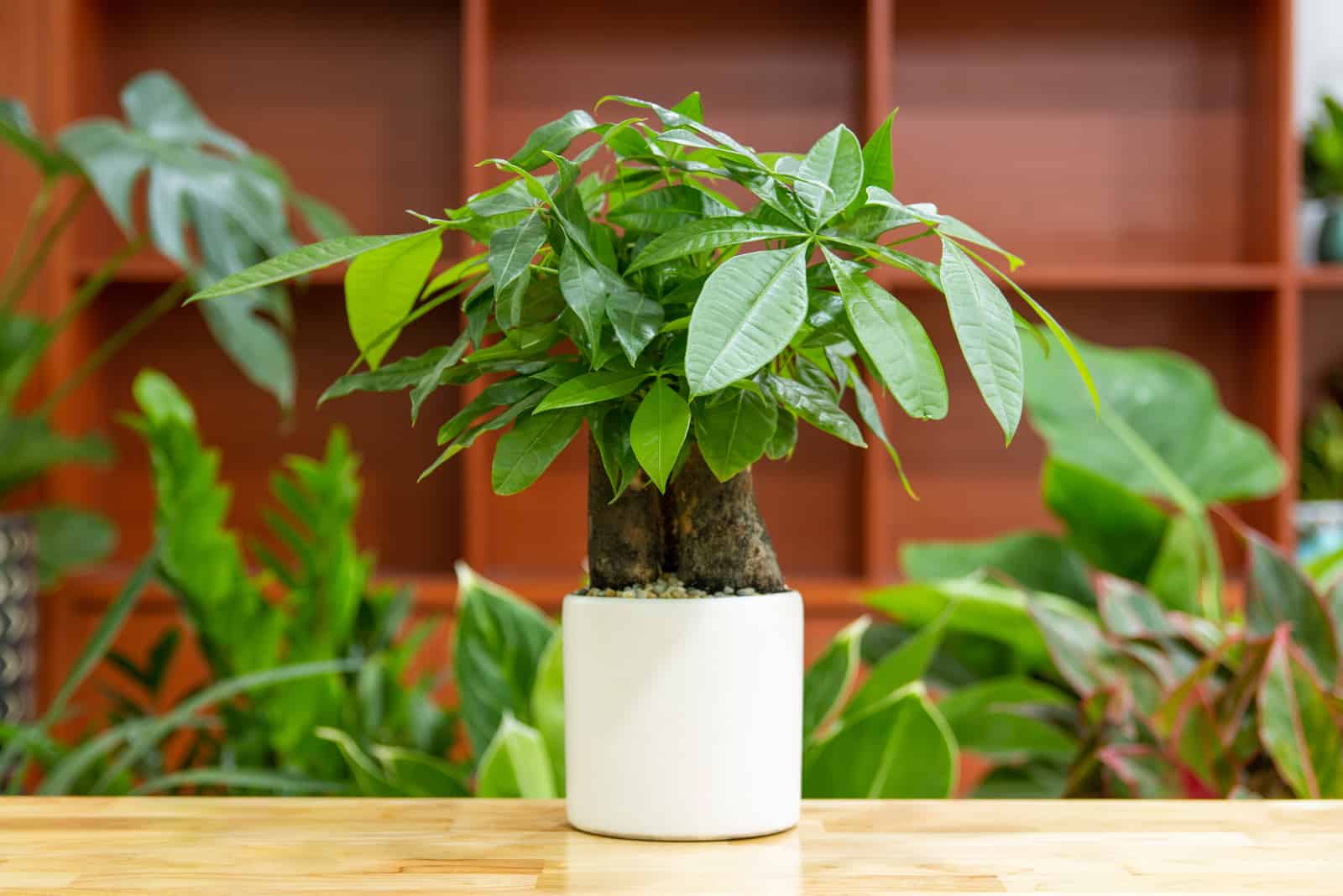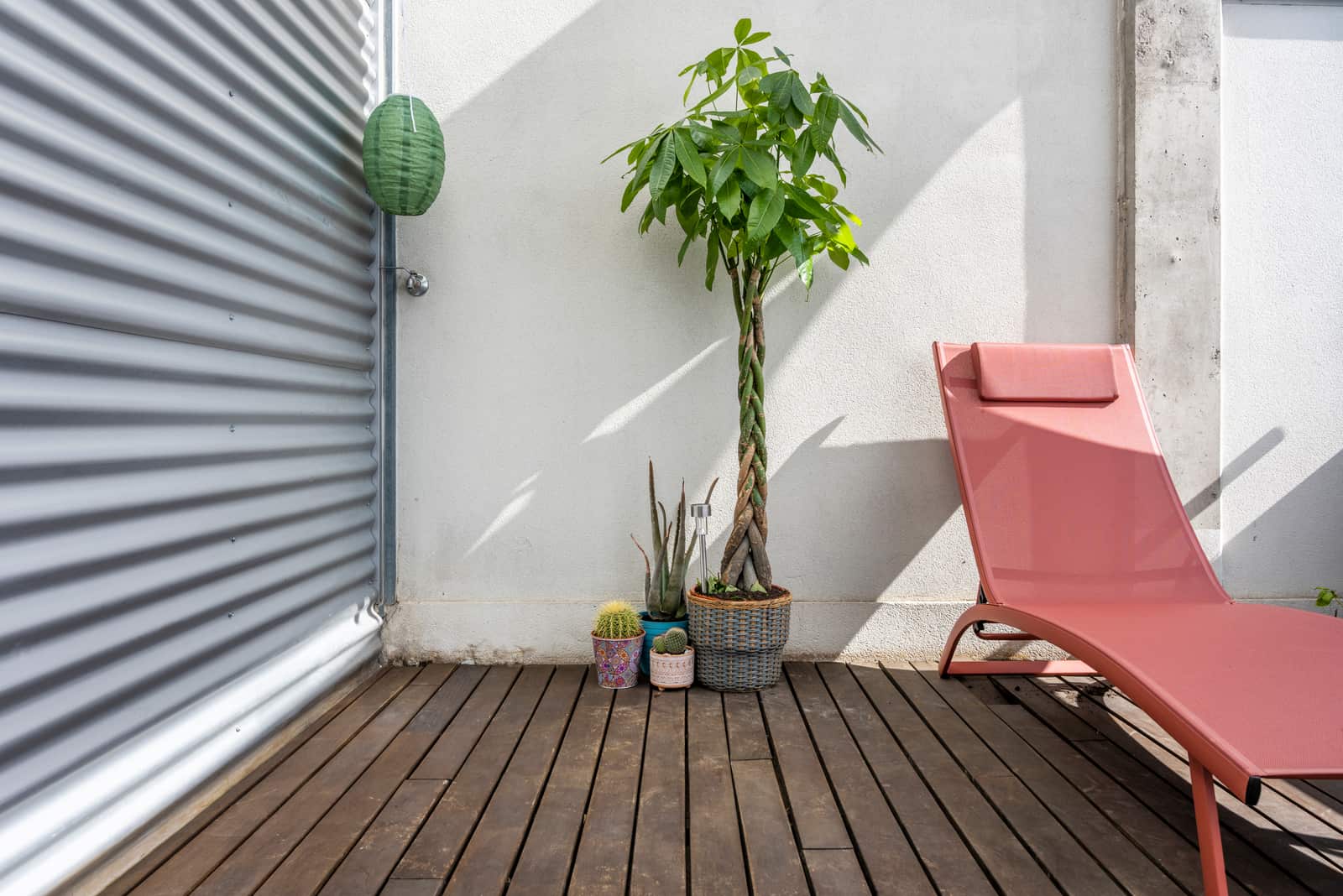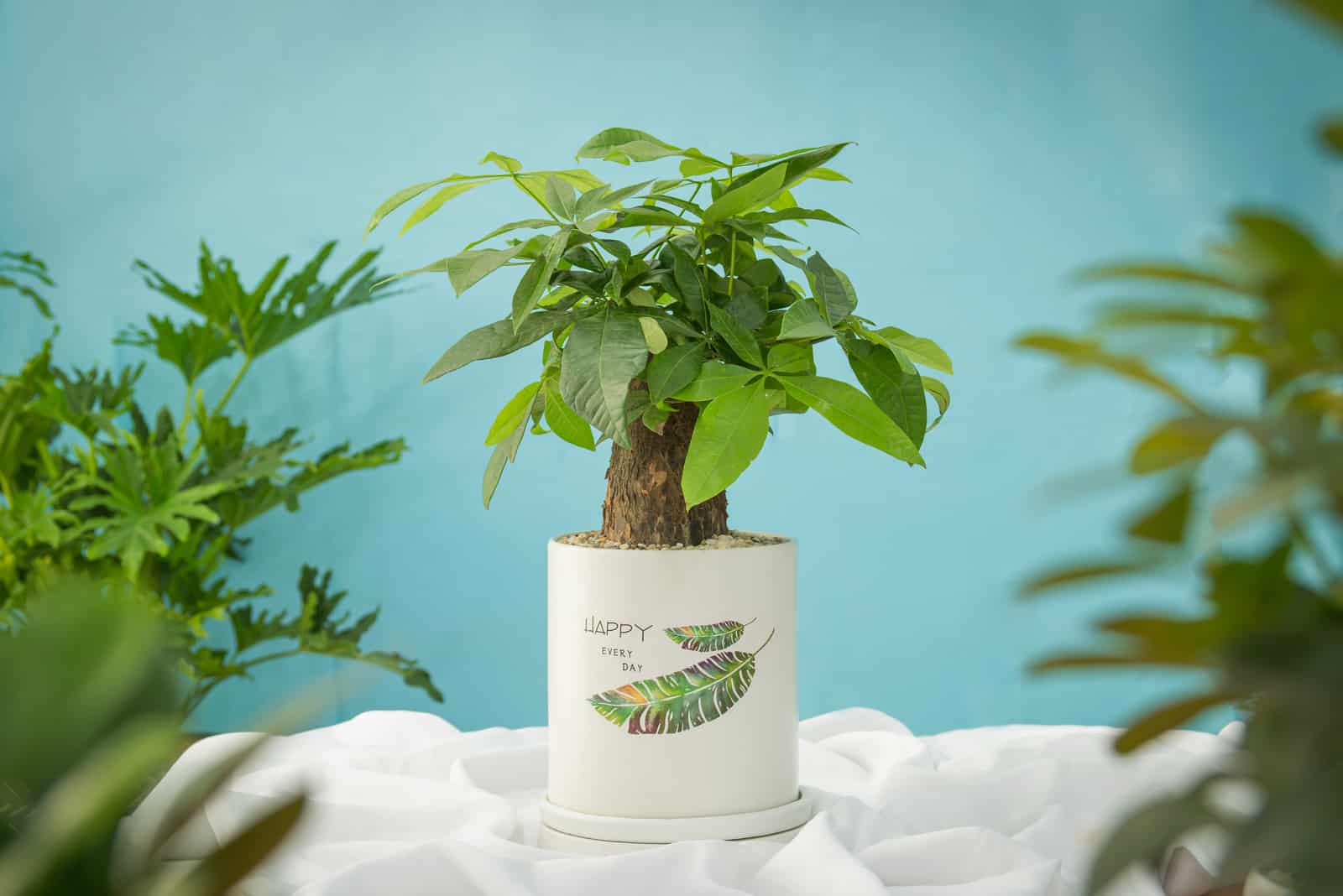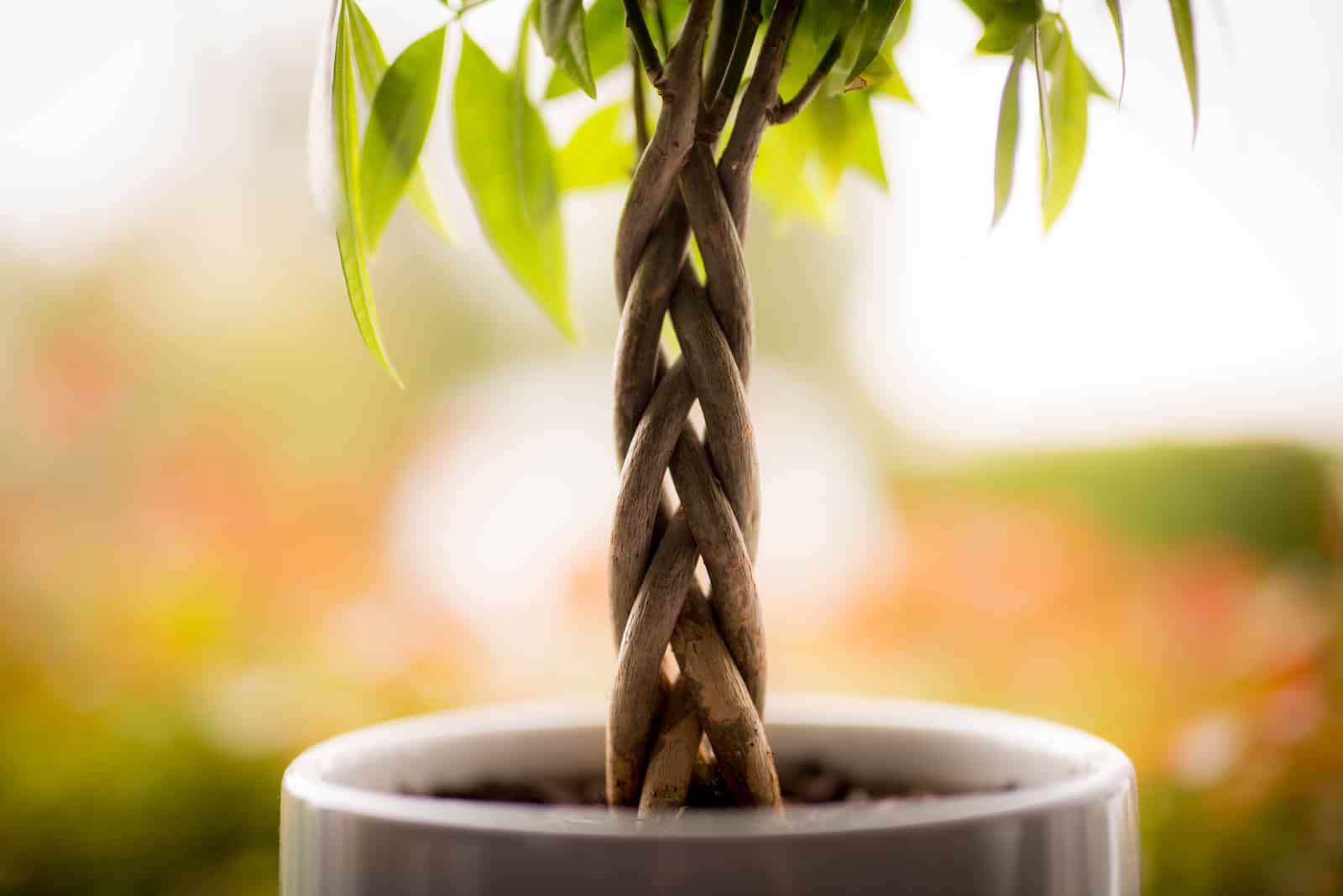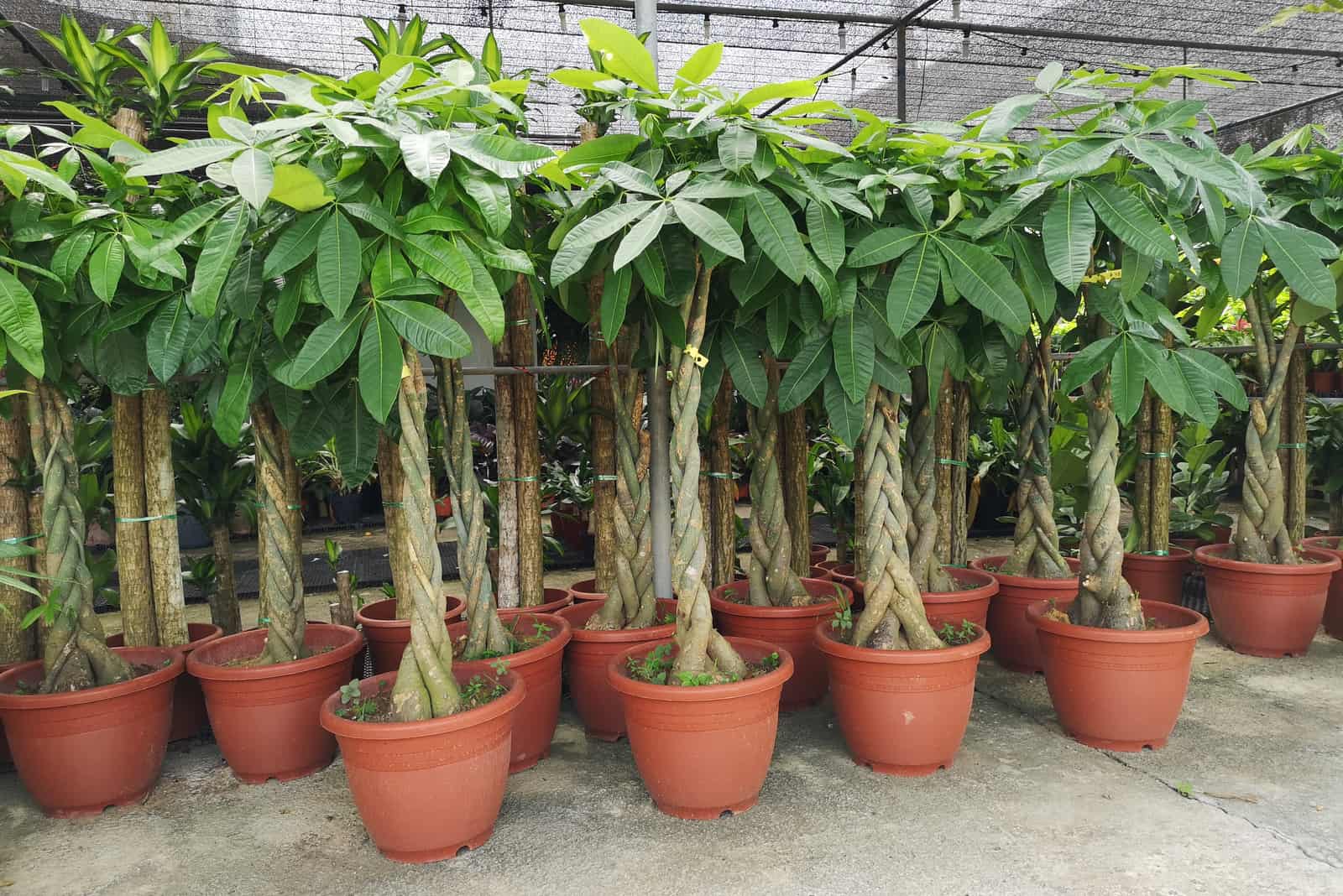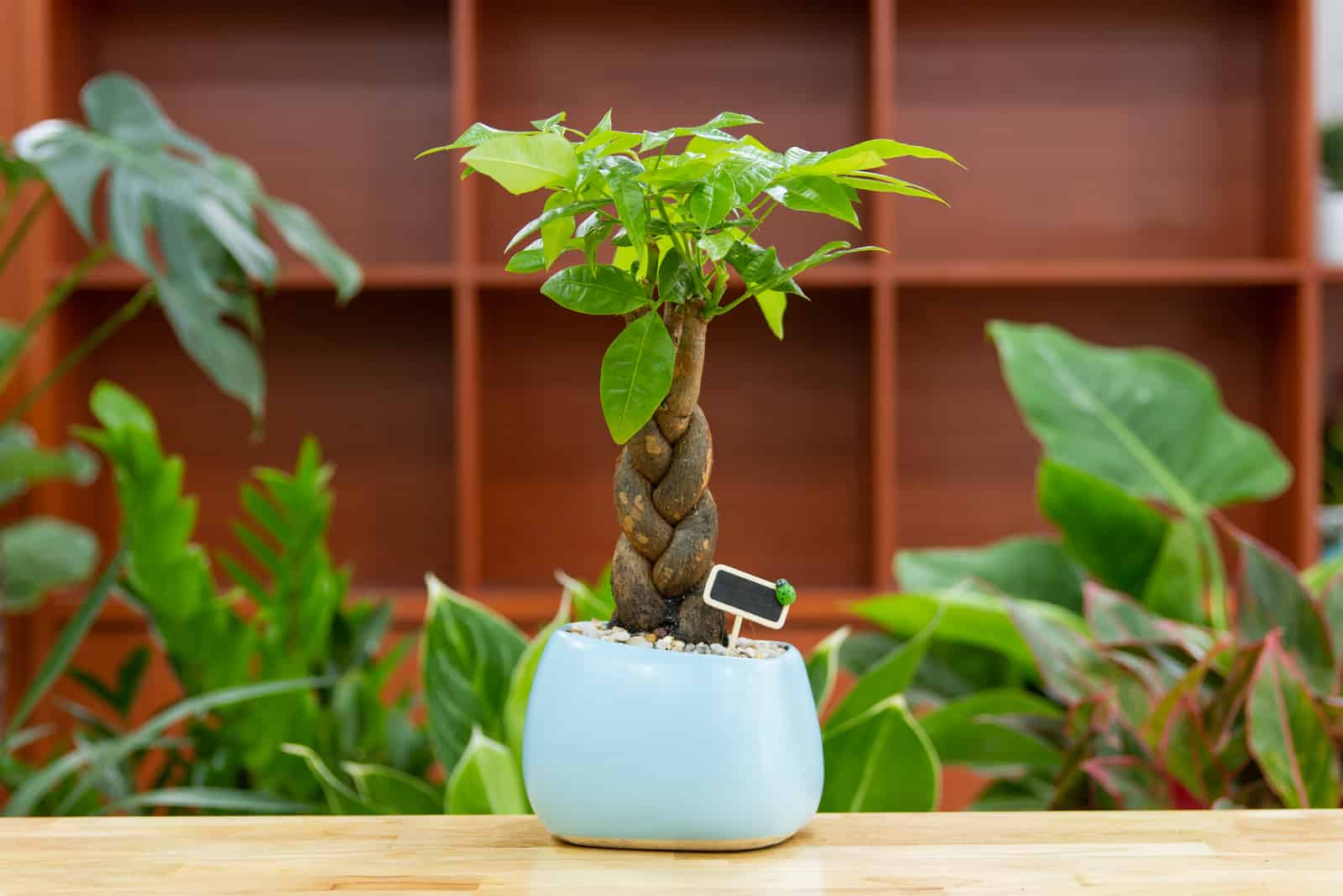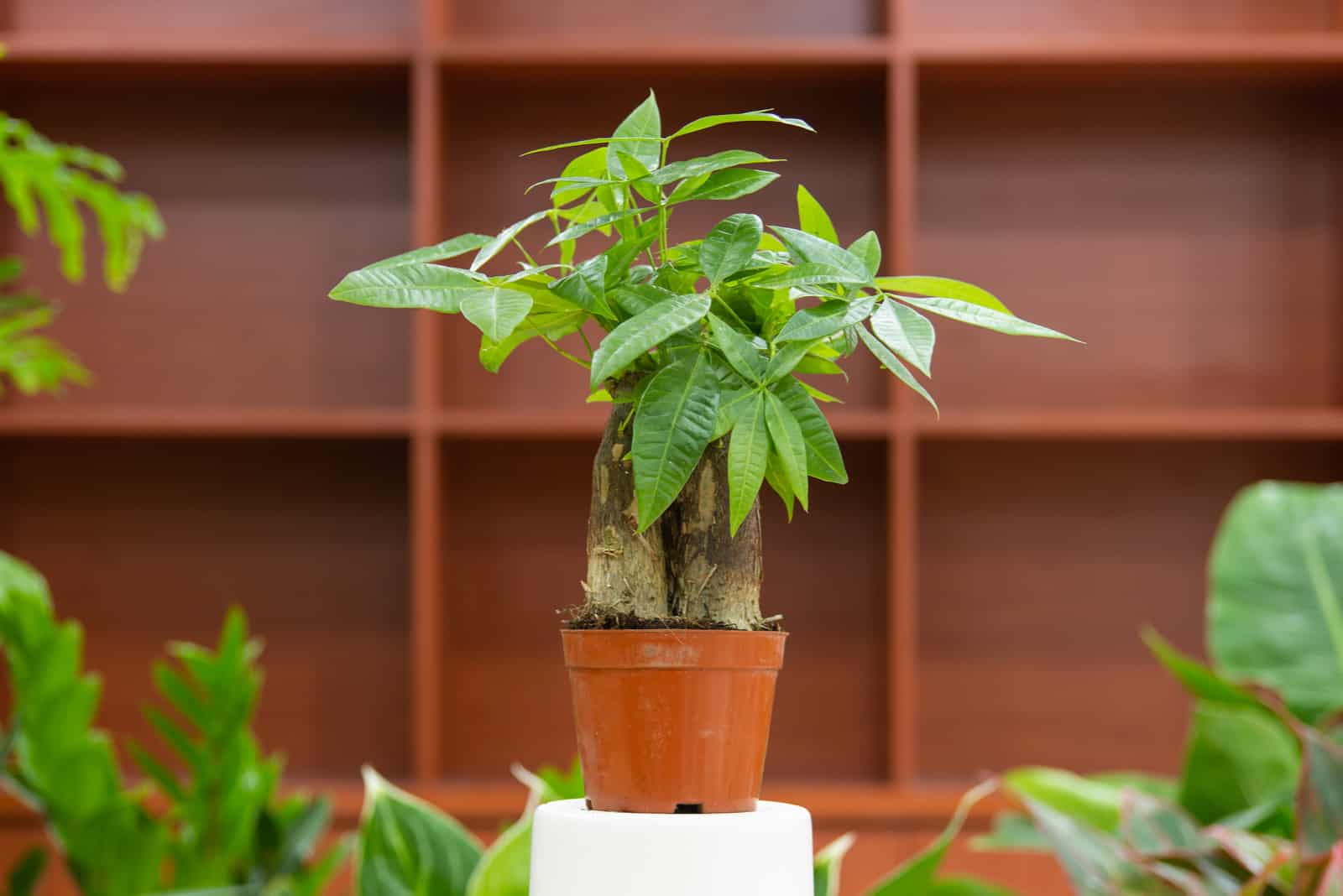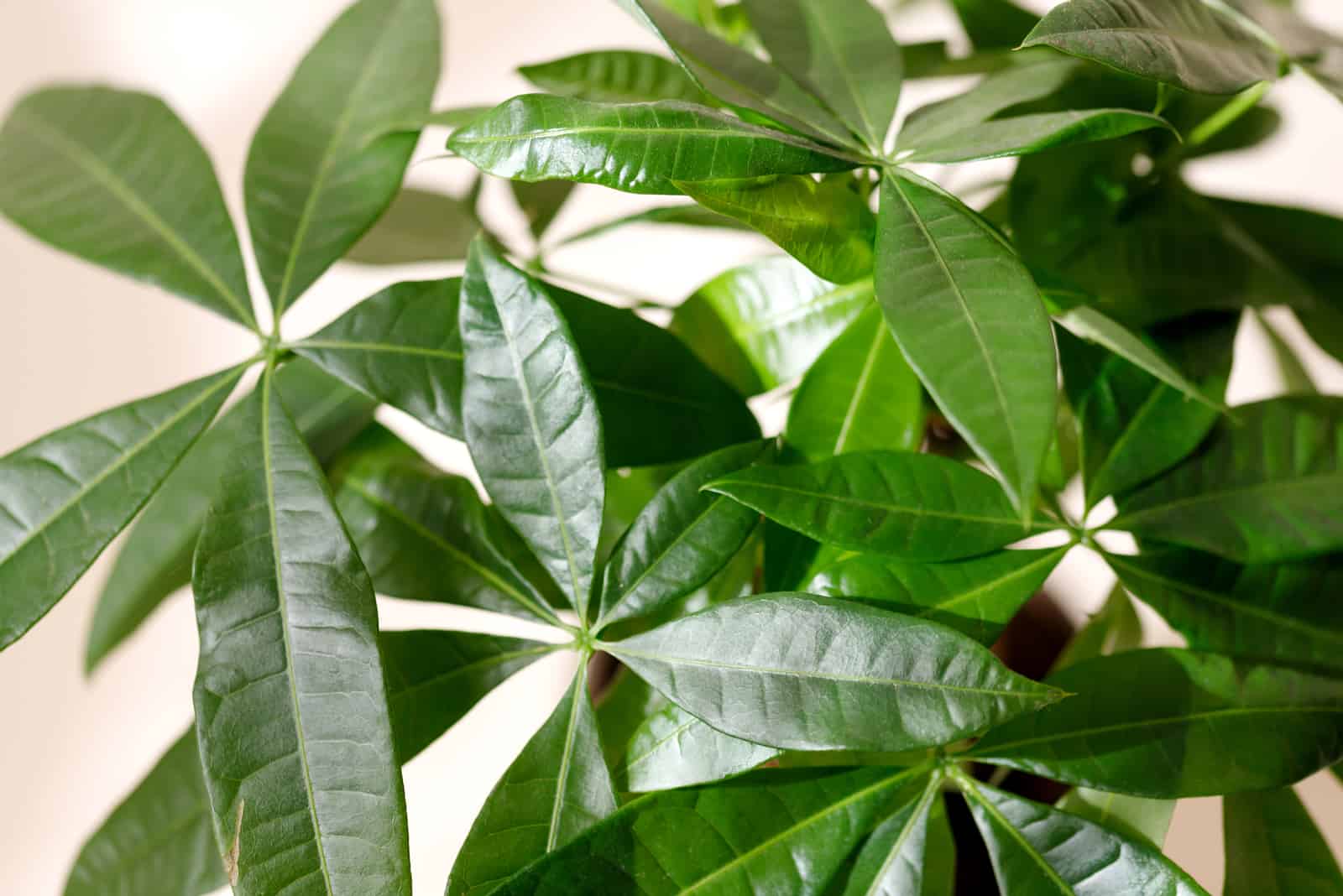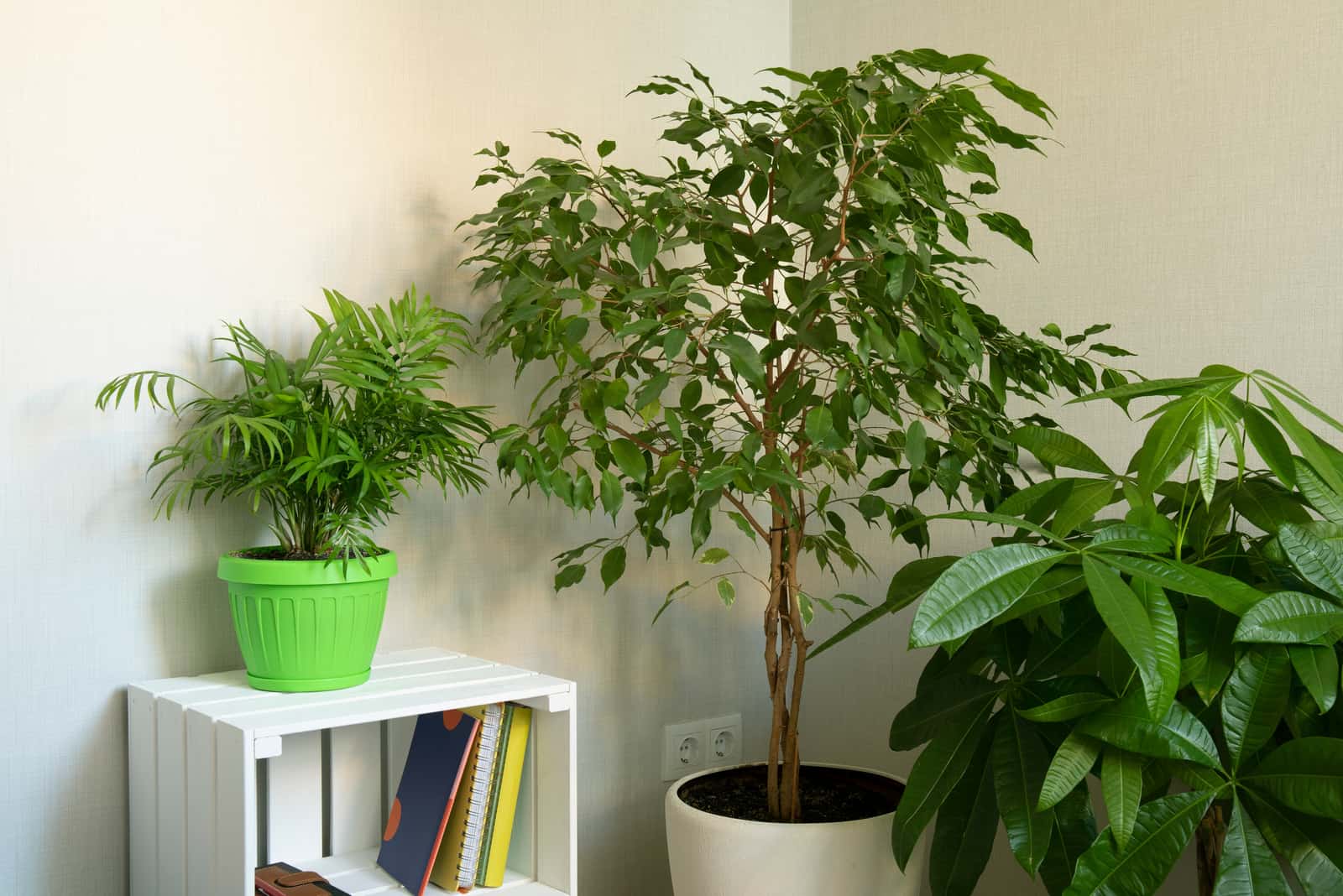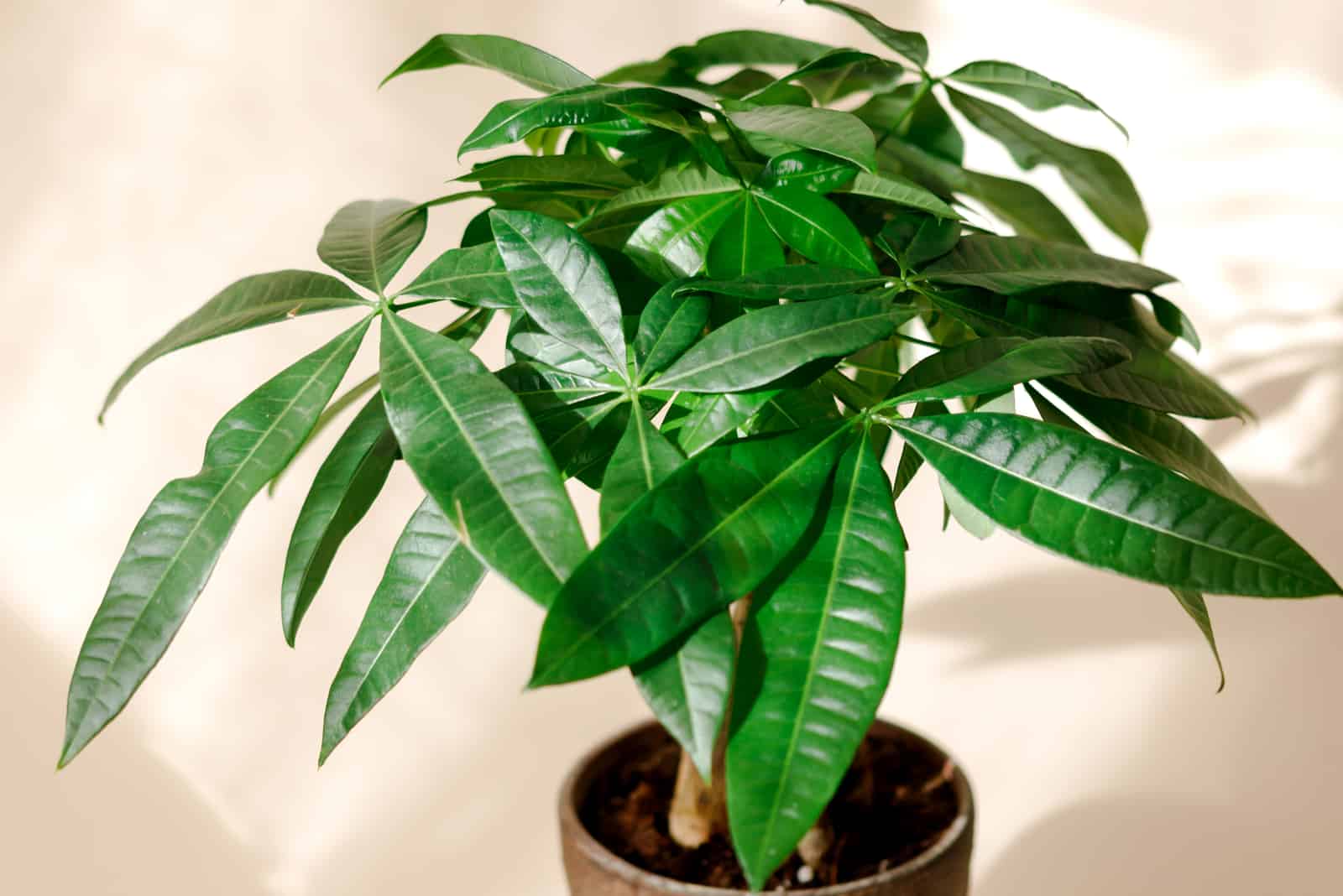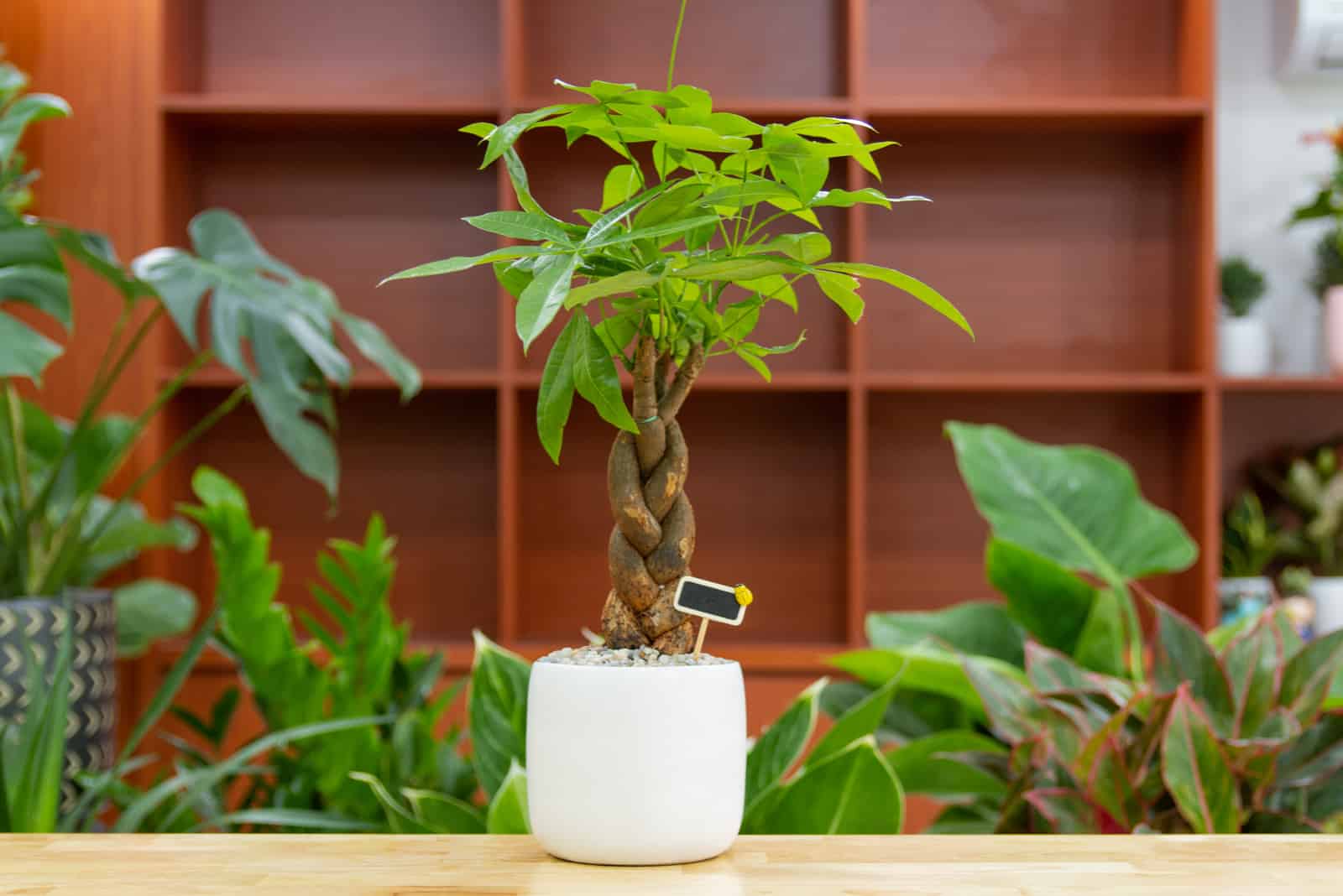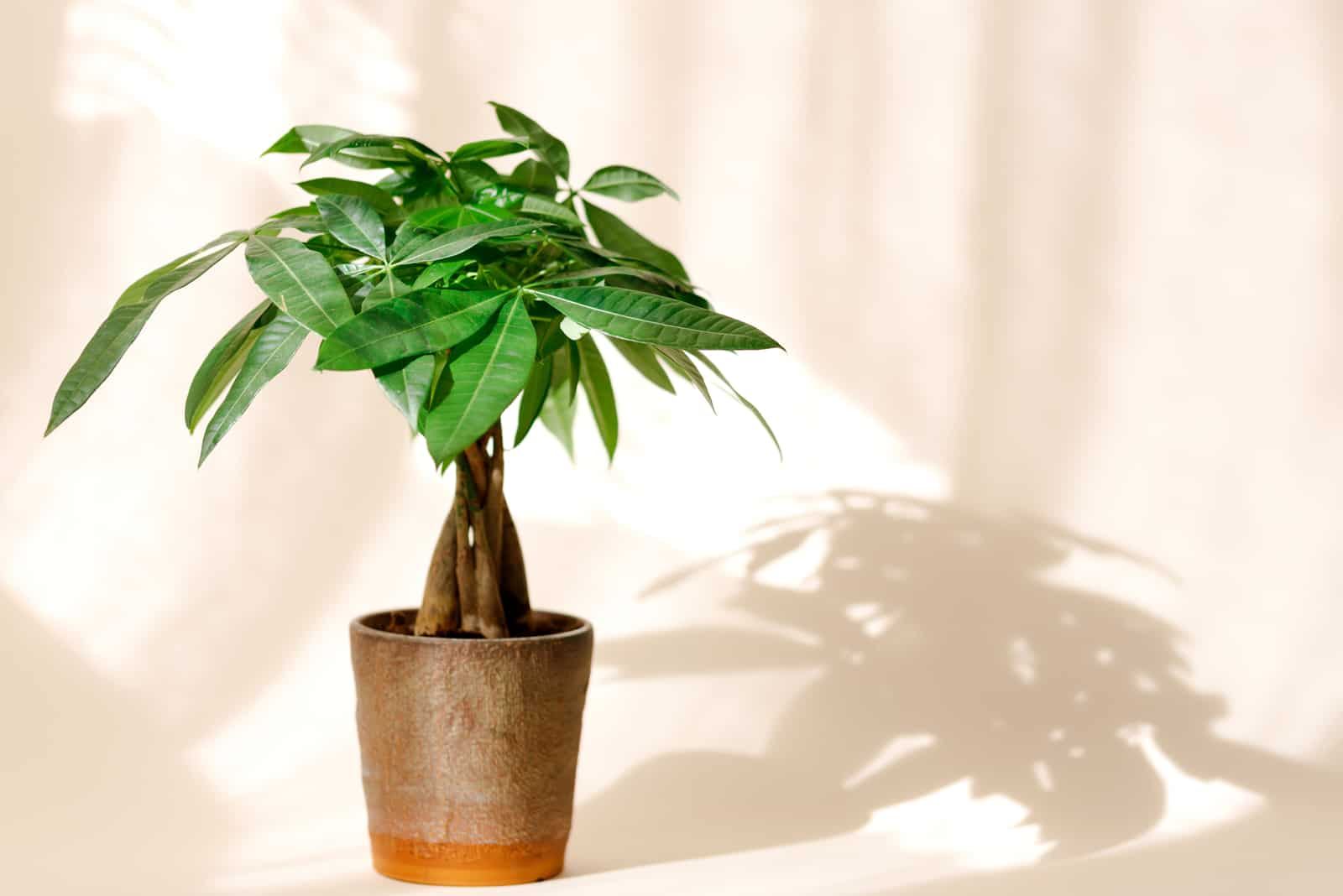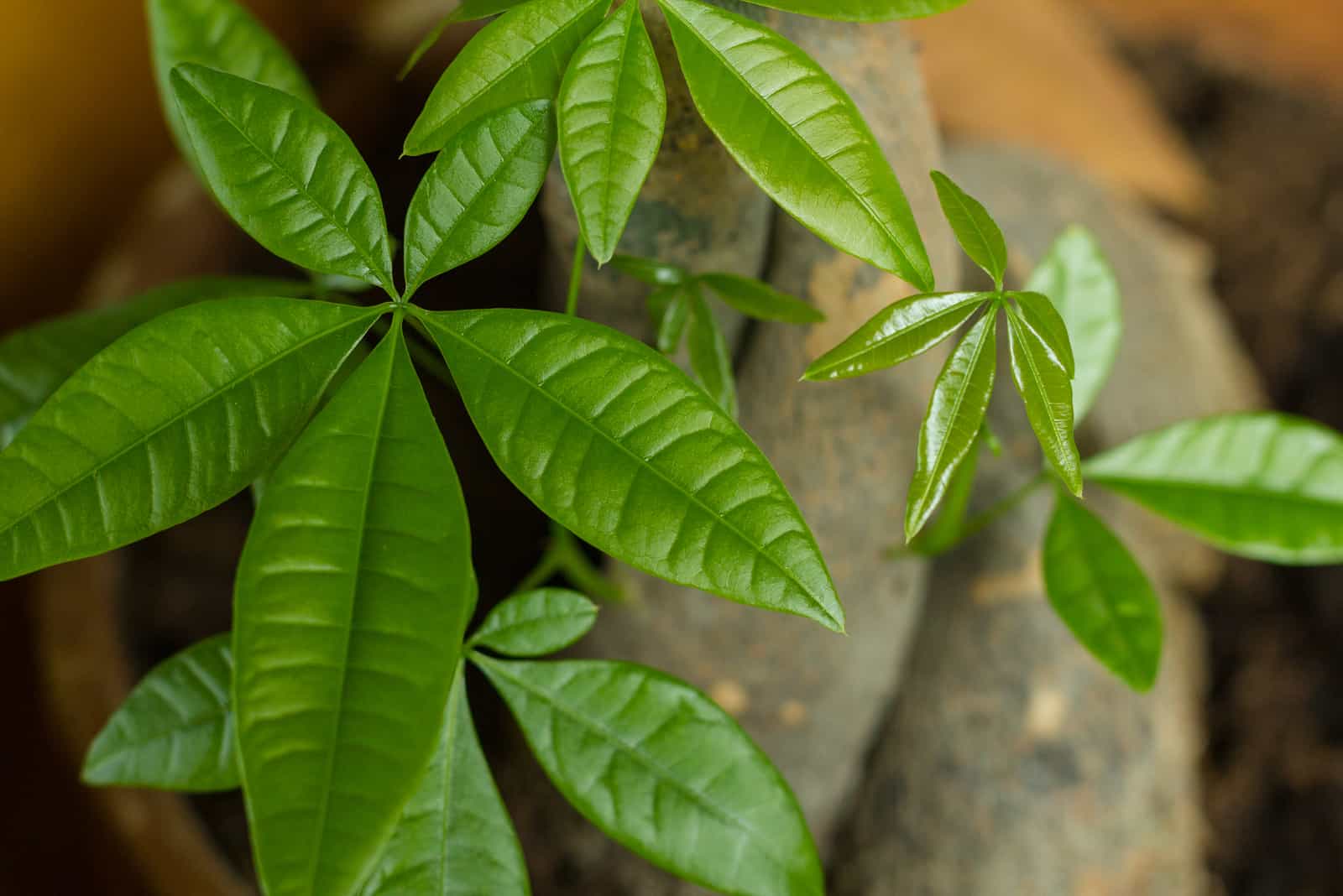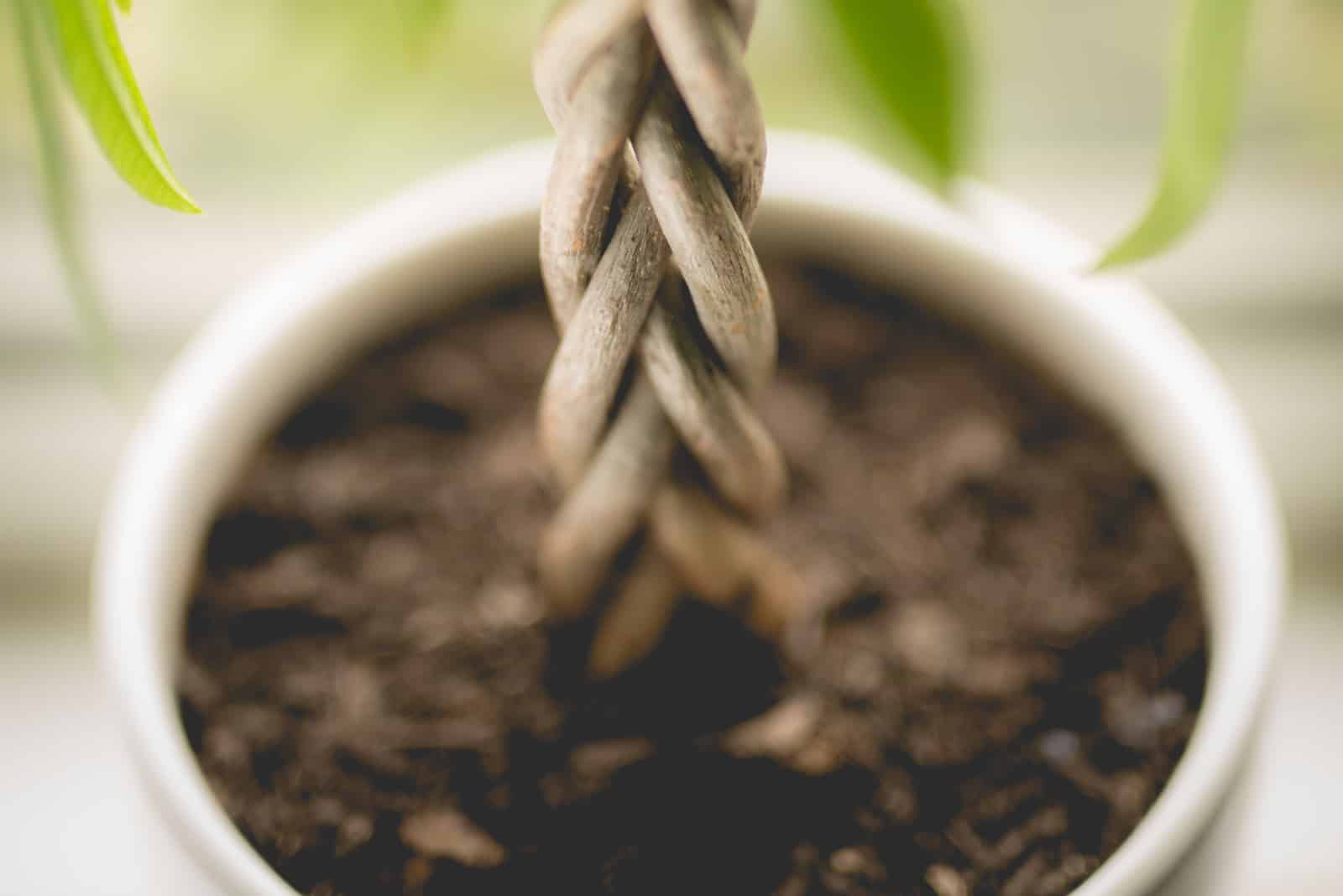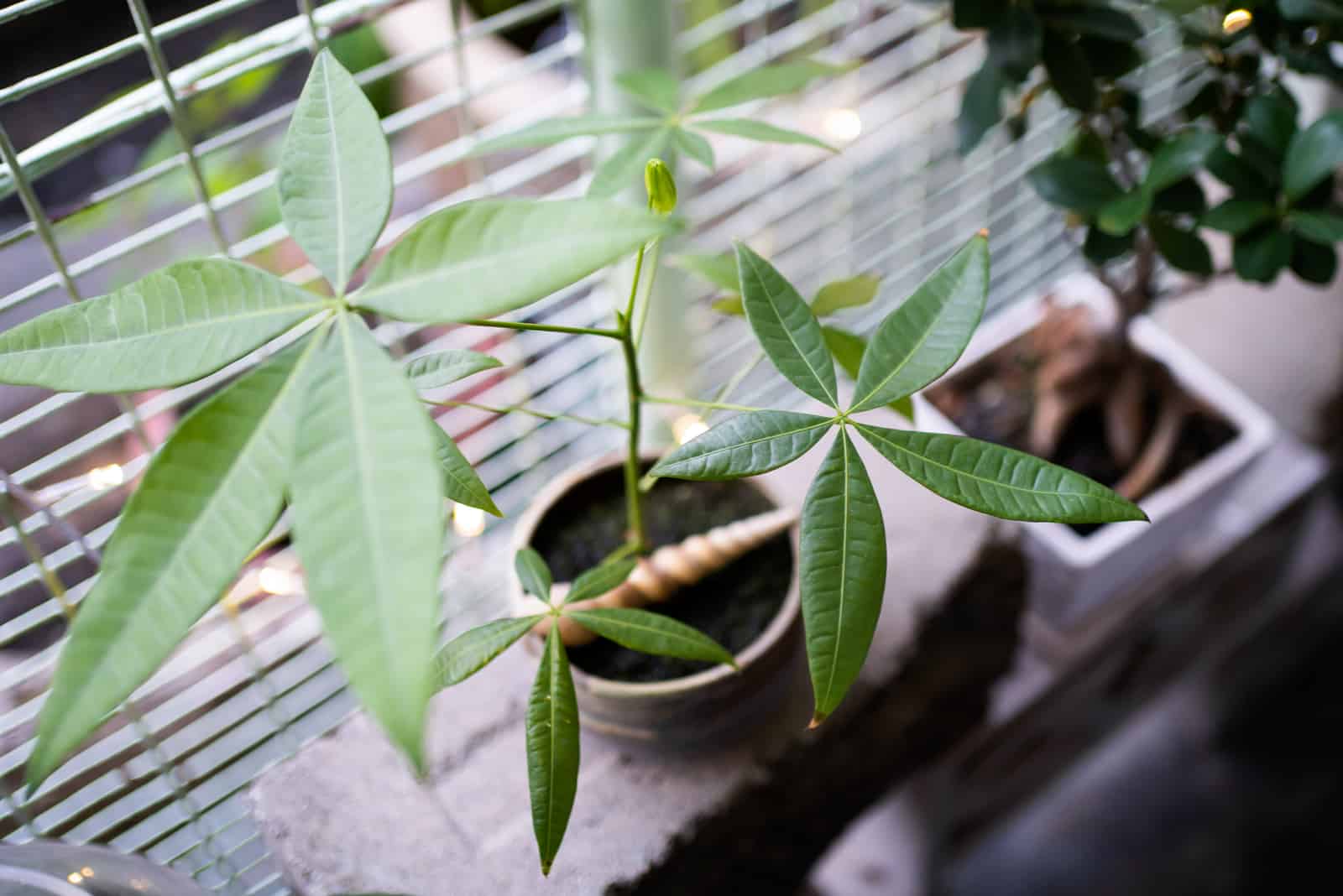A money tree, also known as Pachira aquatica, is a popular indoor plant as it doesn’t require much care.
No matter how low-maintenance the plant is, it can suffer from root rot—a hazardous disease with various causes.
Money tree root rot can be identified by inspecting each part of the plant, not only the roots.
To make sure that your plant suffers from root rot, see if there are any of the following symptoms.
Keep reading to find out the causes and the treatment of this particular issue.
Money Tree Root Rot – The Definition
Before we move on to the identification of this condition, let’s see what root rot, in fact, is.
The main culprits of root rot are fungus or bacteria. Waterlogged soil creates a perfect environment for root suffocation. After the roots suffocate, they start to rot.
Consequently, they don’t transport nutrients and water to other plant parts.
What is essential to understand about fungi is that they can lie dormant in the soil for a long time.
Suppose you continue overwatering the money tree plant. In that case, the fungi will wake up and take control of the root system.
If you don’t react in time, the fungi will cause permanent damage to the plant.
Symptoms Of Money Tree Root Rot
Each part of the plant can show a particular sign of root rot.
The symptoms include changes in the leaves, the growth rate, the soil’s smell, and the root color.
If you notice any of the signs listed below, take the money tree plant out of the pot to examine the roots.
Let’s get into the details.
Leaves Wilting
If the plant suffers from root rot, it prevents the roots from absorbing the nutrients from the soil.
The leaves need a particular amount of nutrients, and if they are unable to get them, they will look malnourished and sick.
They will have a wilting appearance that can spread throughout the entire plant. If you notice wilting leaves, check the moisture level.
Use your finger, a stick, or a moisture meter to measure the moisture level. If the soil is sopping wet, then it is overwatered. Ideally, the soil should be slightly moist, not wet. If it’s mushy and has an unpleasant smell, the plant might be overwatered.
Wet soil will damage the root system, cause root rot, and the leaves will be wilting.
Additionally, wet soil is a breeding ground for various pests.
Poor Growth
Before we discuss other reasons for poor growth, it’s worth mentioning that money trees don’t grow much during colder seasons.
Therefore, if you notice that your money tree plant grows less during winter, this isnot a sign of concern.
Low light is the main reason for the slow growth of money trees during the winter.
On the other hand, if the plant experiences poor growth during the growing season (spring and summer), you should inspect the roots.
Once again, the plant won’t be able to take the nutrients from the soil if it is drowning in water, which will cause its slow growth.
Unpleasant Smell Coming From The Soil
It’s unusual for plants to have a foul odor. First, you should check if the plant has wet soil.
You should come closer to the soil and smell it. If it has an unpleasant smell, the root system demands further inspection.
Later in the article, we will see the cause of this issue.
Discolored Leaves
Yellow leaves are another indicator of money tree root rot.
The leaves of this indoor plant are sensitive, and if there is a reduction in nutrient supply to the root system, it will lead to root rot and the appearance of yellow leaves.
Yellow leaves appear when they aren’t getting enough oxygen. Air circulation is disrupted due to the amount of water in the soil.
Although yellow leaves can also be a sign of underwatering, you should inspect the root system to properly diagnose the issue.
Yellow money tree leaves can occur due to pest infestation. Two pests primarily affect money trees—mealybugs and aphids.
Brown money tree leaves can also occur due to root rot. Again, root disease disrupts air circulation, and dark green leaves turn brown.
Discoloration Of The Roots
If your money tree suffers from root rot, you will notice damaged roots when inspecting the root system. Look at the table below to see the difference between healthy and damaged roots.
[table id=45 /]To check if there are changes in the roots’ appearance, take the plant out of the pot.
You can do this by using newspapers. Wrap the newspapers around the money tree and pull it out. Using a brush, gently remove the surrounding soil.
What Causes Money Tree Root Rot + Solutions
To understand how these different signs occurred, you’ll need to check other factors which affect healthy growth. There are many causes of money tree root rot, but there are solutions to each.
Let’s see!
Poor Drainage System
The drainage system is related to the ability of the soil to get rid of the excess water.
Excess water won’t be able to find its way out, and it will stay around the roots long enough to cause root rot.
How To Improve Drainage
The best solution to poor drainage is using a pot with drainage holes and raising it above the saucer. The drainage holes will allow the excess water to drain into the saucer.
After watering the money tree, take the saucer and pour out the water. That way, it can’t pool up around the root system.
If you are unsure that drainage holes and a saucer will be enough, you can add activated charcoal to the bottom of the pot, and it will help absorb the excess water.
The charcoal will also prevent the soil from becoming waterlogged.
Overwatering
Overwatering is the main cause of root rot. Even if you pay a lot of attention to plant care, overwatering your money tree will allow water to pool up, and your healthy money tree roots will be soaked. This is what root rot, in fact, prefers. It will fight the soggy roots and probably win the battle.
Solution To Overwatering – Watering Schedule
An essential part of any plant care is a watering schedule. Like almost every other tropical plant, money trees don’t require much watering.
The money tree plant should be watered once per week. Between waterings, allow two to four inches of soil to dry out below the surface.
Three factors affect the watering frequency:
• The season
• The pot material
• The place of the plant
Soil’s Capacity To Drain Well
The soil should be compact, but if it’s compacted too tightly, the water will be unable to drain.
The consequence is pooled excess water around the roots that prevent the soil from taking in the nutrients.
How To Improve Drainage Capacity
The key to good drainage is adequate potting mix.
If you notice that the water pools on top of the soil, it’s time to repot the plant in new soil.
The best potting soil for money trees is peat moss.
Other ingredients you should include in your potting mix:
• Perlite
• Sand
• Pebbles
• Pumice
• Vermiculite
Infection Caused By Pathogens
Pathogenic infection refers to the infection of the previously used potting soil.
Planting money trees in infected soil will allow the pathogens to spread and cause root rot.
How To Decrease Susceptibility To Pathogens
When you repot the plant, use a new pot (or sterilize the old pot).
Additionally, always use fresh soil.
When you buy a plant, don’t place it next to other houseplants in case of infection.
Inadequate Pot Size
Potting mix and an adequate drainage system can keep excess water from destroying your plant.
But, if the plant’s pot is too big, it will retain moisture at the bottom part of the plant, and the soil will become waterlogged and cause root rot.
Which Pot To Choose
When you are repotting, always use a pot that fits the size of the plant.
If the plant outgrows the pot, you will need a new, bigger pot.
It’s beautiful to use decorative plastic or metal pots. In this situation, you should double-pot the money tree plant.
The decorative pot should be slightly larger than the original pot. Make sure that the primary pot is made from terra cotta or clay.
Fill the empty space between two pots with stones to allow any excess water to drain.
Watering Dormant Money Tree Houseplants
As money tree plants become dormant during winter, the need for water reduces.
The soil will likely become waterlogged and cause root disease if you water the plant during dormancy.
Adjust Watering During Dormancy
The key to watering during dormancy is to water less frequently. The watering schedule above suggests waiting until two to four inches of soil dries out.
But, during winter, since the plant doesn’t receive much sun, you can prolong the period between watering to two or three days.
What Is The Best Treatment For Root Rot
Even though root rot sounds impossible to cure, don’t worry; there is an excellent way to save any money tree plant suffering from this disease.
Try these 8 steps to get rid of root rot and save your money tree.
1. Let The Soil Dry Out Completely
Before you attempt to revive the money tree plant, make the process easier by letting the soil dry out completely.
You shouldn’t grab the plant from the pot and pull it out. The best would be to gently turn the pot upside down and let the plant slide from the pot.
If that doesn’t work, you can help the plant come out by using a butter knife.
You can make the drying process faster if you place the plant on a baking rack.
Don’t leave the plant on the baking rack for too long; proceed with the recovery process after two days.
2. Remove The Root Rot
Now that you know how to take the plant out of the pot, you can see any changes in the root balls.
• Prepare pruners and sterilize them. If the roots are affected by fungi, you should use a fungicide. (Sterilize pruners using diluted bleach or 70% isopropyl alcohol).
• Remove any roots which look unhealthy (root rot). Use sterilized pruners and prune the affected roots. Refer to the chart above to identify unhealthy roots.
• After removing the affected roots, wash the other roots thoroughly.
• Remove damaged leaves with sterilized scissors
• Let the roots and the soil dry.
3. Prune The Leaves
If there are dead leaves, it doesn’t take much effort to remove them, just pinch them off. Unfortunately, if your plant is severely damaged, you will have to remove even the healthy money tree leaves.
If you removed most of the roots affected by the disease, you should prune two-thirds of the leaves.
Don’t forget to sterilize pruners. Dip them in diluted bleach or 70% isopropyl alcohol.
Why prune the leaves? The plant has undergone a stressful period, and it will need a lot of energy to recover.
Leaves need a lot of energy to grow. If they are taking it from already weakened roots, the chances for recovery are lower.
By removing the leaves, you free up energy that the roots will use throughout the entire recovery period.
This step is necessary only when the plant is severely damaged and after you cut most of the roots.
4. It’s Time For Repotting
After you remove the affected roots, you should repot the plant.
Use a clean pot to avoid spreading the pathogens which cause root rot.
If you purchase a new pot, it shouldn’t be much larger in size because it could cause the roots to drown. If you are using the old pot, make sure it is well-cleaned and disinfected before you use it.
The best material for a money tree pot is terra cotta or unglazed clay.
Now follow these instructions for repotting:
• Prepare a bleach solution and soak the planter for 30 minutes (if you decide to use a drainage layer, put it on the bottom).
• Fill half of the pot with soil.
• Put the plant in the soil, and be careful not to damage the roots.
• Fill the other half of the planter with the soil.
Air space in a soil’s potting mix should not be clogged with water as this will prevent oxygen from accessing the roots and destroy the entire system.
Old soil that has been contaminated should always be replaced with fresh soil to avoid further complications.
5. Avoid Watering After Repotting
Money trees shouldn’t be immediately watered after repotting.
The new soil you used for repotting has some moisture already, and watering could cause root rot again.
You should water a repotted plant after one week or when two to four inches of soil dry out.
6. Don’t Fertilize After Repotting
The money tree is now in the stage of recovery. It’s best to avoid fertilizing for at least three months.
If there isn’t a significant improvement, postpone fertilizing until the plant fully recovers.
7. Take Proper Care After Repotting
You can put the plant in the place where you had it before. Don’t change temperature or light conditions.
Make sure that the plant receives enough indirect light. Keep the plant away from any heating sources such as fireplaces or radiators.
Another thing you should do is move the plant away from vents or air conditioners and avoid temperature fluctuations.
If you notice that the plant needs pruning, just remove some top leaves.
The plant will have more energy to grow and recover from root rot.
Don’t expect a quick recovery, it will take months until the plant fully recovers. Trust me, it’s worth it as this is one of the plants that can bring you a fortune.
8. Propagate The Money Tree Plant
If the steps above didn’t help the plant survive, you could propagate your money tree plant.
Money tree plants are usually propagated by placing stem cuttings in soil and water.
If you decide to propagate, there are two ways to do it.
Propagation By Stem Cuttings
• Take the plant out of the pot and remove the soil to clearly see the roots.
• Using a sterilized knife or pruners, cut off 4 to 6 stems with the plant’s roots (make sure they are healthy). The stems should have 2 to 4 nodes attached.
• You can also dip the end of the cut stem into a rooting hormone to ensure better growth.
• Place the cutting into sterilized potting soil. Add sand or perlite to the soil to ensure better drainage, and choose a pot with drainage holes. The cutting should be buried about half an inch in the soil.
• Water the potting mix and continue watering following the watering schedule.
New growth should be visible in three weeks if provided with the necessary conditions:diffused light and temperatures ranging from 68 to 71 degrees Fahrenheit.
Propagation In Water
If you want to propagate this plant in water, do the following:
• Take the money tree plant out of the pot and shake off the soil so you can see the root balls.
• Separate the roots in the root ball.
• Secondary and tertiary roots should be cut using a sterilized sharp blade or knife.
• Fill half of the glass jar with water.
• Place the roots in the jar.
• Place the jar somewhere with low indirect light.
Caution! To avoid contamination, change the water once a week.
After propagation, transfer the new plant to a small pot with drainage holes.
Tips To Avoid Root Rot
By taking good care of your plants, you can prevent any unnecessary complications.
Sometimes, we think that we care for plants if we do more of everything.
The money tree is one of the most common houseplants for a reason. It is low-maintenance, so you shouldn’t go overboard when caring for or feeding it.
Tips For Watering
• Always check the soil moisture (use a finger, wooden stick, or moisture meter).
• Use the watering can you use for other houseplants (avoid the sink, bathtub, or similar places, where the danger of excess water is increased).
• Before watering, bear in mind that leaves should not be watered. You can either choose bottom watering or water over the top of the soil. Water carefully or risk overwatering or underwatering.
• The temperature during winter is lower, so it’s essential to consider that the plant is given less water than during the summer. (Of course, you should always check the moisture level regardless).
• Don’t soak the entire plant; water over the top of the soil, instead, until approximately two inches of the soil is dry, or alternatively, use bottom watering.
• Soak gradually; don’t pour the entire prepared amount of water all at once.Let the soil soak properly.
• Use distilled or filtered water to avoid chemicals and toxins harming your plant.
Soil Loose
Air space in a soil’s potting mix should not be clogged with water. This will prevent oxygen from accessing the roots and destroy the entire system.
To allow aeration, take a pencil and poke holes on the soil’s surface.
That will create extra space near the roots.
Control Light Exposure
The best place for a money tree plant is near the south-facing window. As one side of the money tree will be more exposed to light, rotate the plant regularly.
Money trees should be exposed to bright and indirect sunlight. You can use curtains to prevent direct sunlight from reaching the plant.
Low light will prevent good drainage, and the water will be retained better.
Regulate Humidity And Moisture Levels
Higher humidity levels, like in rainforests, should be imitated in your home as closely as possible.
If the humidity level is lower than it should be, you can increase it by using a humidifier.
Mist the leaves and roots regularly to maintain healthy growth.
Keep the plant away from air conditioners and vents as they dry out the air and reduce humidity levels.
One of the ways to check moisture levels is by simply putting your finger in the soil.
You can also use sticks made of wood. A clean stick means that the soil is dry; if the soil remains on the stick, you have wet soil.
Another more reliable way to measure the water in the soil is to use a moisture meter.
Wet soil will damage the root system and become the cause of wilting.
Wet soil will also attract pests.
Is Root Rot Contagious?
This may be stressful to read, but root rot is contagious due to the airborne feature of fungal spores.
Often, root rot affects other plants in a garden.
The plants in the garden sometimes don’t have much space between them and mostly share soil.
If you notice any sign of root rot, isolate the money tree to prevent the spreading of pathogens.
Bear this in mind if you spot any sign above, as root rot can damage other plants.
Wrapping Up
Now that you’ve reached the end and found out the symptoms and causes of money tree root rot, I’m sure you can’t wait to solve the problem.
As you’re well equipped to deal with root rot, your money tree plant has excellent chances to recover.
Good luck!
Like this post? Share or pin it for later!

